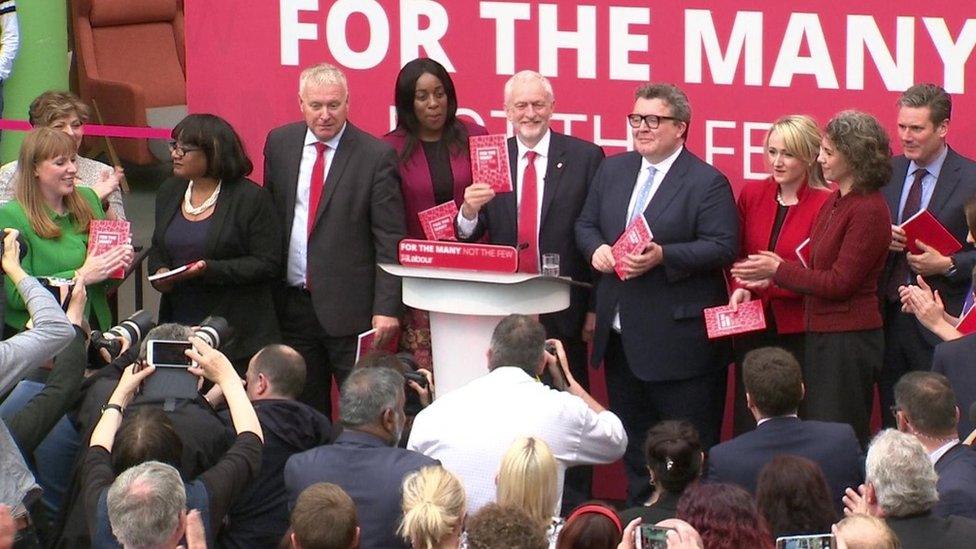Reality Check: Labour - where's the money coming from?
- Published

Labour's manifesto itemises revenue-raising measures it says will bring in an extra £48.6bn a year.
The biggest increase in tax take by far, according to Labour's plans, will come from an increase in corporation tax.
It's currently 19% and Labour plans to increase that rate to 26% by 2021.
Once that's done, Labour says corporation tax will raise £19.4bn per year.
There are other measures to raise revenue: VAT on private school fees, for example, and a levy on what Labour calls excessive pay - starting with a 2.5% levy paid by employers on pay packages over £330,000.
The manifesto also says £6.5bn will be raised from an aggressive programme to crack down on tax avoidance.
Political parties always say they will do that, and it can be done - but it's a pretty inexact science.
A further £5.6bn comes from a new tax on financial transactions - known as a "Robin Hood" tax.
Another large chunk of extra revenue, £6.4bn, comes from taxing high earners more.
Reality Check: Who would be affected by Labour's higher taxes?
Those earning £80,000 will be taxed at 45%, while a new 50% rate will be reintroduced for those on salaries above £123,000.
The new income tax rules will apply to about 4% of the workforce, that's about 1.2 million people.
Behavioural changes
But will all the changes bring in the sort of money Labour expects?
The headline numbers, for one, don't take into account any behavioural change.
For example, high earners could transfer part of their incomes into private pensions, do less work or leave the country.
And remember, the Scottish Parliament has some freedom to set its own tax rates and thresholds.
Even though the manifesto says the changes to income tax should raise £6.4bn, Labour concedes that once behavioural change is taken into account, the actual money coming in will be lower.
The manifesto gives the party £3.9bn of wiggle room for all their tax rises - an allowance for less money coming as a result of changing behaviour.
But according to the independent Institute for Fiscal Studies (IFS) - which looks at tax and spend policy - Labour might still be overestimating how much it thinks it can raise.
The IFS says Labour's forecasts "looks a little on the optimistic side".
Likewise, companies may change their behaviour when tax rates change, and you also have to take account of the overall health of the economy.
This could affect the expected revenue from corporation tax changes and the introduction of the "Robin Hood" tax.
Borrowing more
Overall, though, Labour says it can finance all its current spending plans through changes in the tax system: £48.6bn out, £48.6bn in.
But these numbers do not include the party's big plans for investment spending and renationalising services such as the railways, the Royal Mail and so on.
Labour says it will borrow money to pay for future investment - it pledges to create a National Transformation Fund of £250bn - but there is no detailed costing of nationalisation plans in the manifesto and what it will mean for overall borrowing.
Despite all the extra borrowing, Labour makes one bold promise - it says it is committed to ensuring that the national debt is lower at the end of the next Parliament than it is today.


